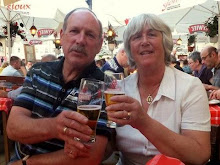In the early 19th century whalers and seal hunters used the coast in this region. The bay was named by the crew of the whaler The Fairy in 1828. John Griffiths established a whaling station in 1835 and a store was opened in 1839. In 1843, James Atkinson, a Sydney solicitor, purchased land in the town by special survey. He drained the swamps, subdivided and leased the land, and built a harbour on the Moyne River. He named the town "Belfast" after his hometown in Ireland. The post office opened on 1 July 1843 (the post office actually opened in 1837as "Port Fairy" but was renamed "Belfast" on 1 January 1854 before reverting to the original name on 20 July 1887.) Agriculture developed in the region, and Belfast became an important transport hub. By 1857 the town had a population of 2,190. In the mid-to-late 19th century, Belfast was one of Australia's largest ports, catering to the whaling industry. In 1887 the town was renamed Port Fairy as a result of an Act of Parliament.
Baffled by the zero miles to Belfast on the milepost below, reading the above inscription it all became very clear.
Port Fairy has a rich history and 50 buildings are protected by the National Trust of Australia.
 |
| This building is unique in that a central chimney services both buildings. |
 |
| Bottom right is Emoh |
 |
| River Moyne |
 |
| A walk to Rabbit/Griffiths Island |
Took a couple of hours to walk around the town admiring the buildings and walking to the lighthouse. Also on nearby Griffiths Island, a breeding colony of the short-tailed shearwater or Australian muttonbird could have been seen. We didn't see any (apart from several dead fledgelings) and assumed the breeding season was over. A small market was also going on and we cast diets to the wind and purchased sausage rolls and hot dogs. Then it was back for a walk or rather trek, around Tower Hill a huge 4km wide 80 m high inactive volcano.
 |
| View from the approach road just off the highway, |
 |
| This was one hell of a climb! |
Back to the visitor centre a hot tea to recover first before doing another 1km walk to the Last Crater. This time it was all gravel paths and the climbs even more of a challenge. On the rim, we couldn't get a good look at the crater because of the trees and it was a shame the sun wasn't out. I reckon the crater pool would have looked stunning with the sunlight on it.
 |
| Apparently, the last crater to be formed at Tower-hill. |
So to another history lesson. The Echidna is covered in fur and spines and has a distinctive snout and a specialized tongue which it uses to catch its insect prey at a great speed. Echidna lays eggs and as a mammal, this is highly unusual. The Platypus is the only other mammal that does the same. Female echidnas lay one egg a year and the mating period is the only time the otherwise solitary animal meet one another. The male has no further contact with the female or his offspring after mating. A young echidna is the size of a grape but grows rapidly on its mother's milk, which is very rich in nutrients. Baby echidnas (puggles) eventually grow too large and spiky to stay in the pouch and, at around six months of age, they leave the burrow and have no more contact with their mothers.
To make this day complete another Koala seen in a tree. This time actively feeding.
And just as we are about to leave several Emu's arrive to wish us farewell! This place is a wildlife haven because we also saw Fairy Wrens and a small cave filled with Honey bees and wax. Never have I seen the likes of that before.
 |
| Fledgling Fairy Wren |
























No comments:
Post a Comment